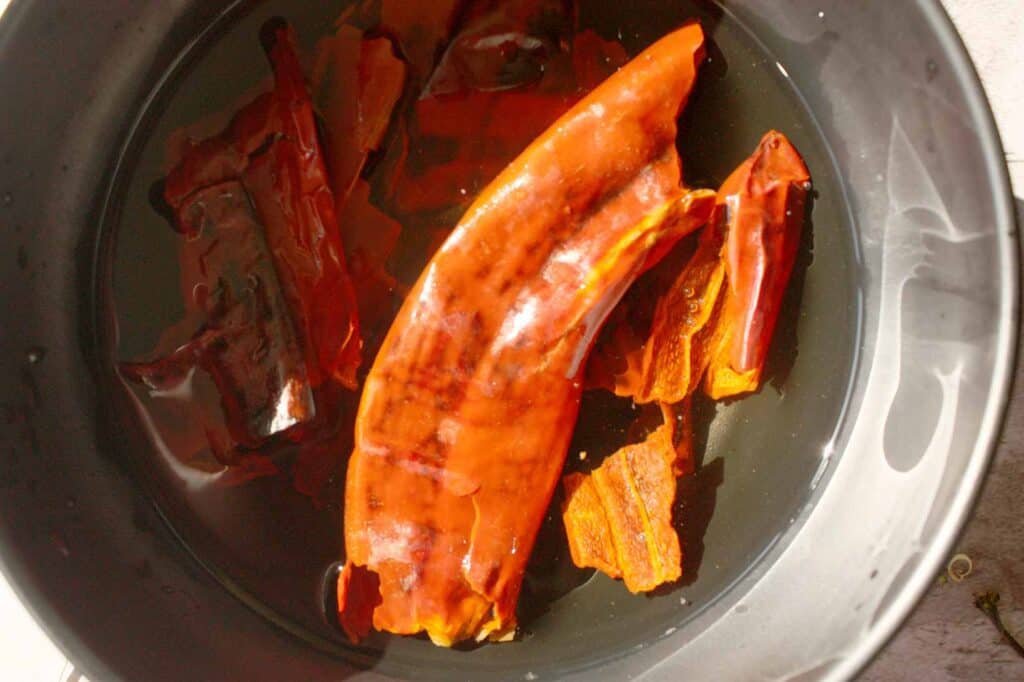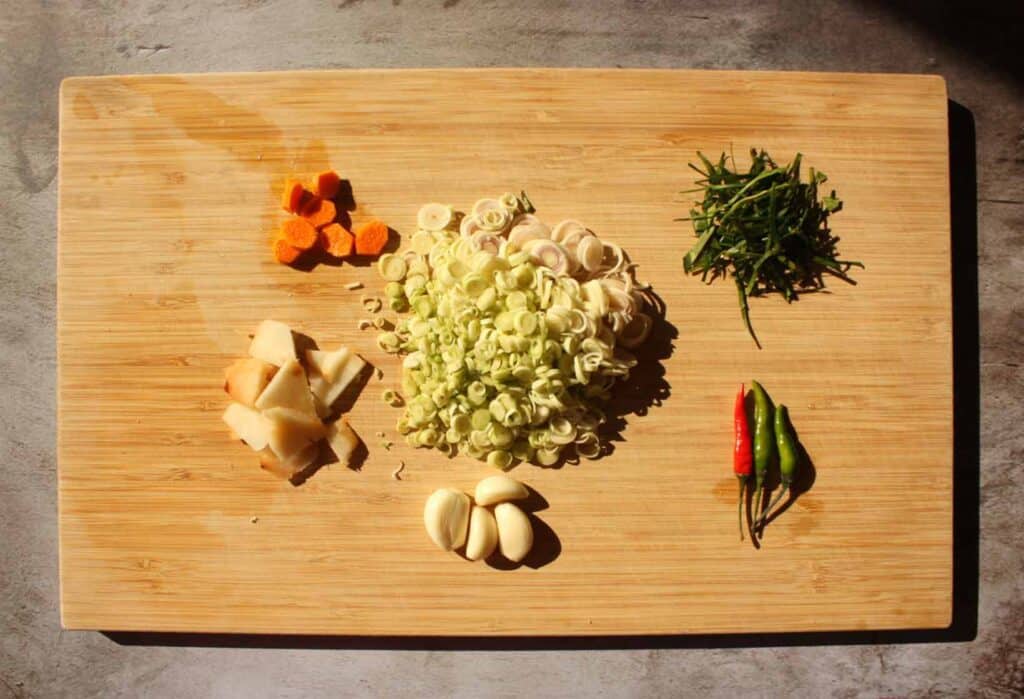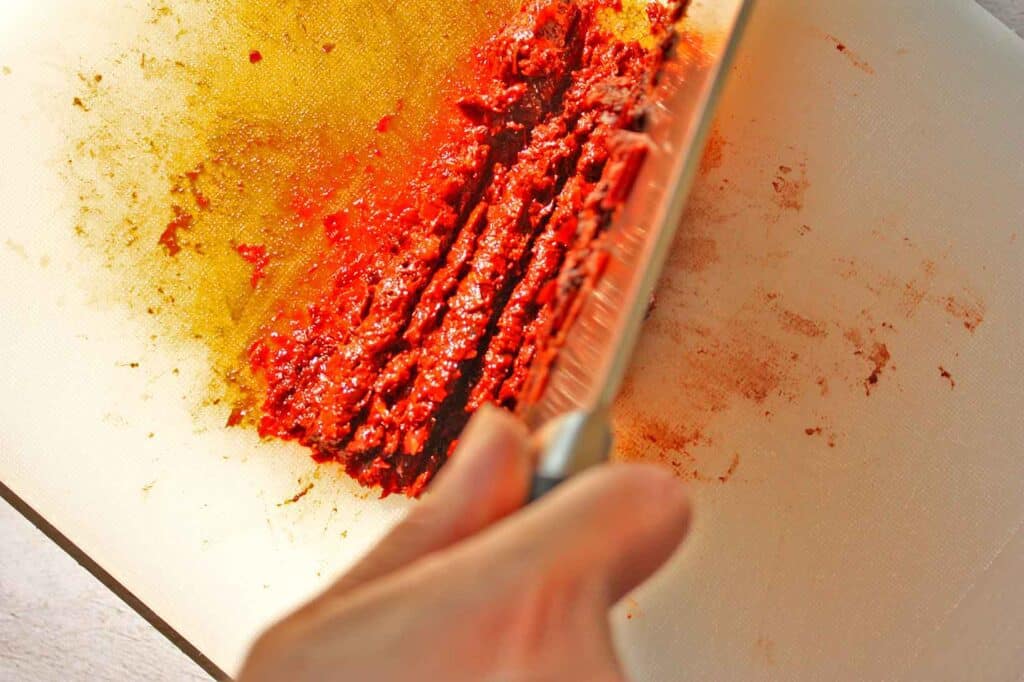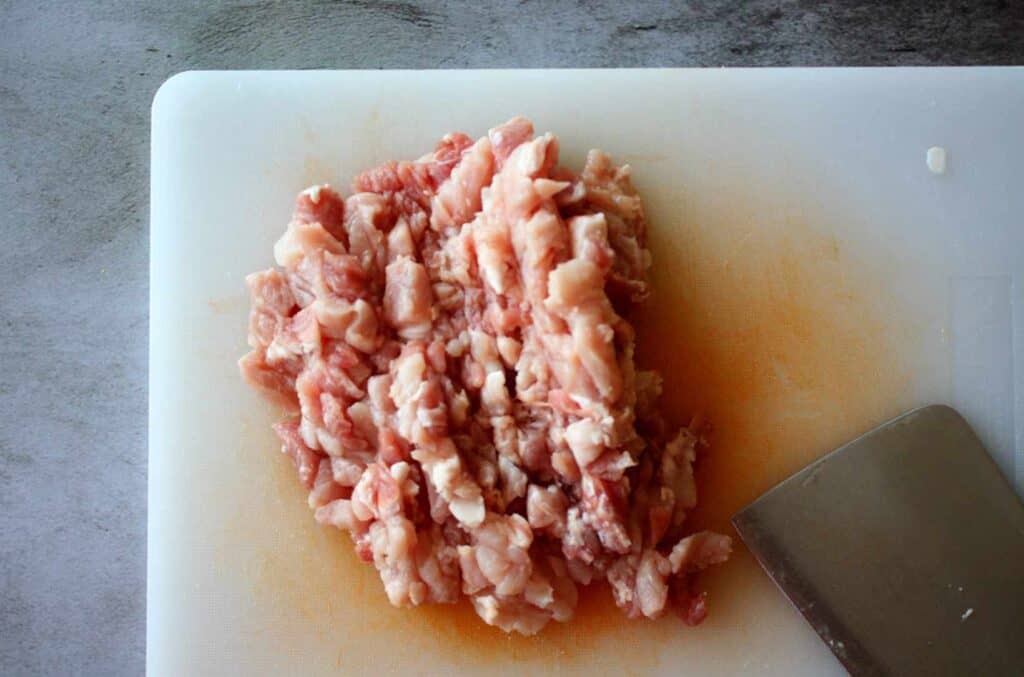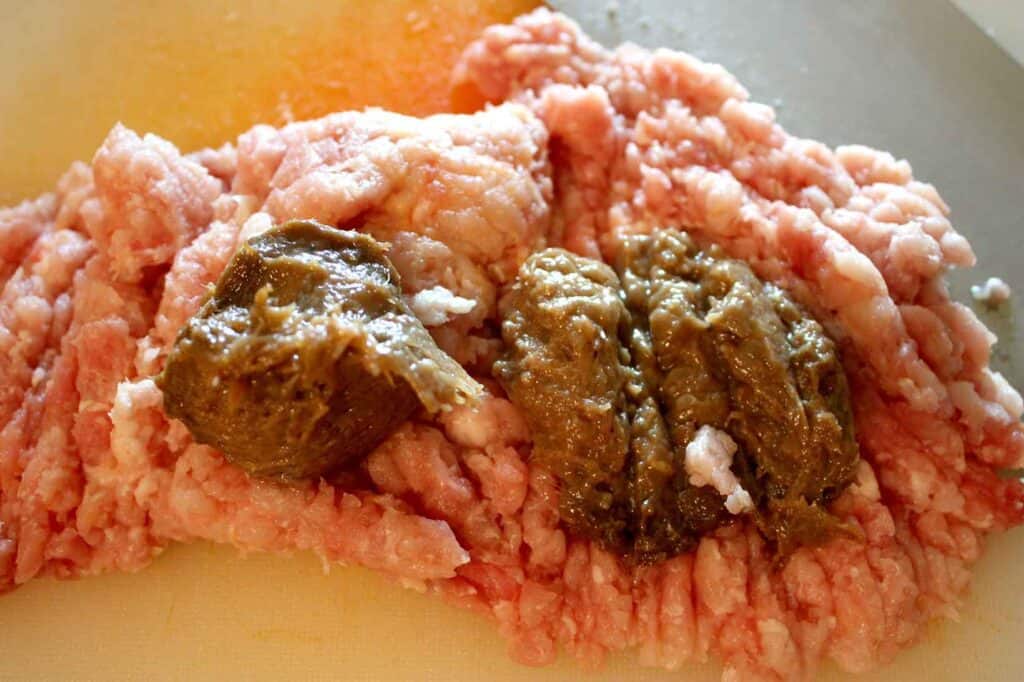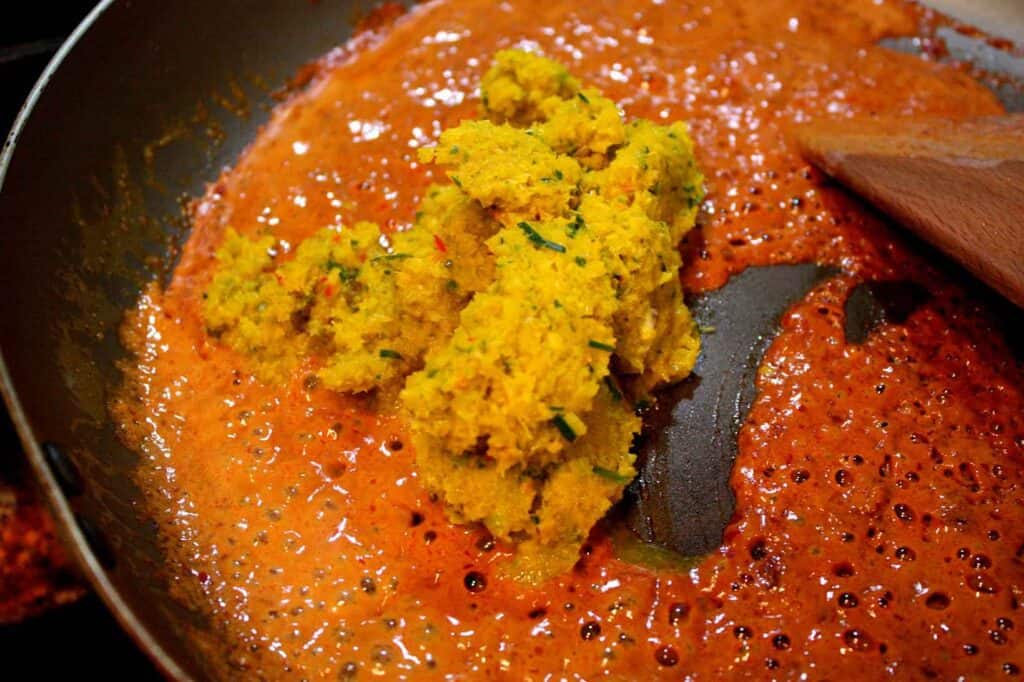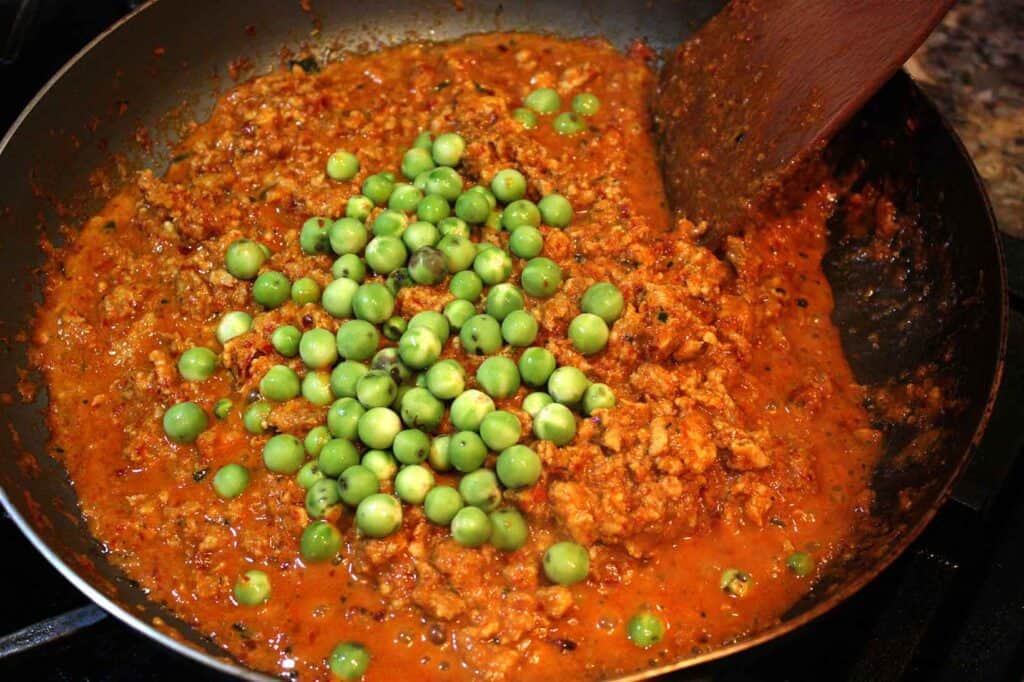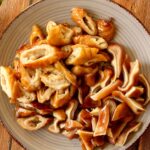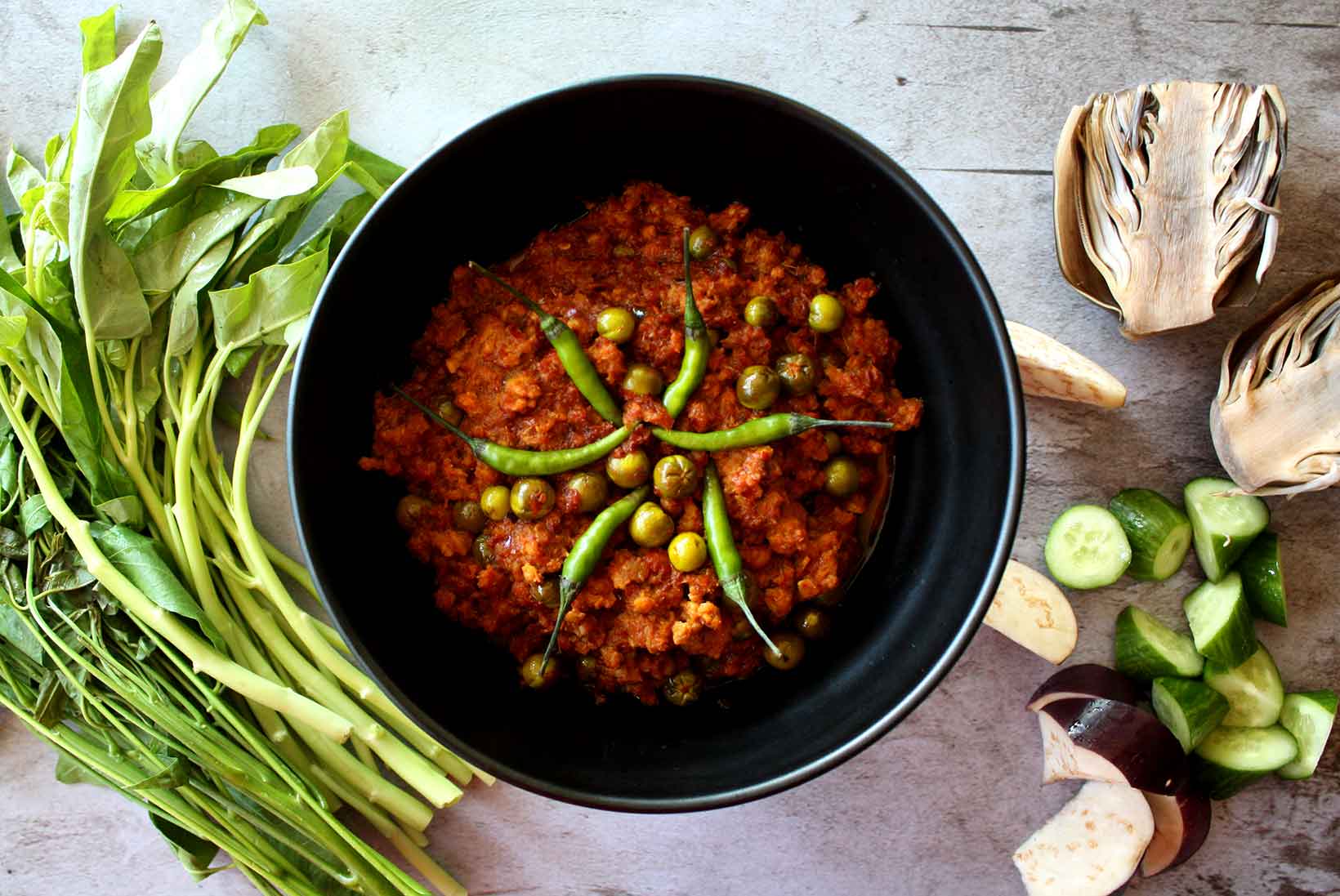
Prahok ktiss (also spelled as “prahok ktis” and “prahok k’tis”) is a rich, aromatic Cambodian dip that can be served either as an appetizer or a main dish. In Cambodia, we used to buy prahok ktiss for lunch and eat it with fresh veggies — it was cheap, delicious, filling, and so widely available that I never knew how much time an effort the cooks spent on making this dish. Since leaving Cambodia, I’ve had to learn to make prahok ktiss myself. After several attempts (and a few angry neighbors, distressed by my mortar-and-pestling), I finally ended up with a prahok ktiss that tasted like the real deal. This is the prahok ktiss recipe I’ll share with you below.
If you’re a Cambodian living abroad, you probably already love prahok. Still, try this prahok ktiss, and you’ll fall in love with the delicate notes of kreung (traditional Cambodian curry paste), the sweetness of coconut milk, and their special union with the pungent fish paste. And if you’ve never tried prahok before, you’ll find that prahok ktiss is an excellent way to discover Cambodia’s coveted fermented fish paste. That’s because the citrusy, coconutty flavours of this dish offer a much-needed balance to prahok’s sharp aroma and taste (which are often compared to that of blue cheese).
Luckily, you can source most of the ingredients needed for prahok ktiss at any Asian (or even regular) supermarket in the US. While we haven’t found authentic Cambodian prahok, we easily procured the Vietnamese version (called mắm lóc xay), which tastes much like prahok back home.
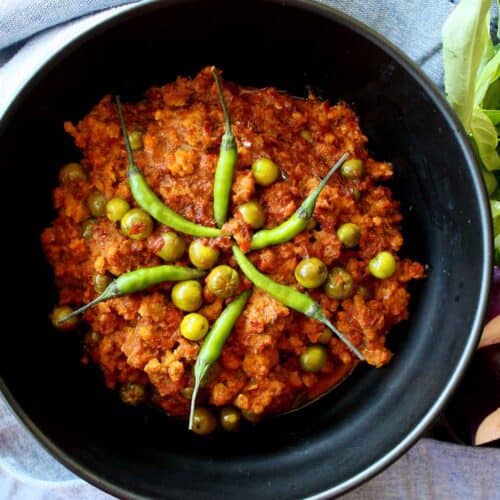
Prahok Ktiss Recipe
Equipment
- 1 Small mortar and pestle (affiliate link) You can use a blender instead
- 1 Cutting board
- 1 Butcher knife
- 1 Medium-sized skillet
Ingredients
Prahok Ktiss Dip Ingredients
- 2 Tablespoons Prahok
- 1 Cup Coconut milk
- ½ Tablespoon
Fish sauce (affiliate link) - 1 Teaspoon Sugar
- ½ Teaspoon
MSG (affiliate link) - ¾ Pounds Minced pork Pork belly is an alternative
- 5 Cloves Garlic
- 1 1-inch knob Turmeric
- 1 1½-inch knob
Galangal (affiliate link) - 2 Stalks Lemongrass
- 5 Leaves Lime tree leaf
- 5 Sweet chilli peppers
- 2 Hot Thai chilli peppers
- 1 Cup Pea eggplant Also known as "Thai" or "bitter" eggplant
Vegetables For Serving Prahok Ktiss — All Optional
- Banana flower (boiled)
- Green chillies
- Cabbage
- Morning glory also known as "water spinach"
- Cucumbers
- Eggplant raw
- Lettuce
- Carrots
Instructions
- Soak the sweet chilli peppers for 30 minutes

- Clean garlic and place in the mortar
- Cut lemongrass into thin slices and place in the mortar
- Clean, then cut turmeric into small bits and add to the mortar (alternatively, use turmeric powder)
- Slice the lime tree leaves into small shreds and place them into the mortar
- Slice galangal and put into the mortar
- Add the hot Thai chillies to the mortar

- Pound the garlic, lemongrass, galangal, turmeric, lime tree leaf, and chillies in the mortar using the pestle to produce the kreung paste

- Using a butcher knife, mince the soaked sweet chillies into a paste

- On a cutting board, mince the pork with the butcher knife

- Add prahok to the pork, then continue to mince with the butcher knife, while turning the mixture over

- In a skillet, heat a tablespoon of cooking oil over medium heat, then add half a 250ml can of coconut milk and stir
- Add the minced sweet chillies to the skillet and mix well with the coconut milk

- Add the kreung paste (contents of the mortar) to the skillet, and mix well

- Place the pork and prahok mix in the frying pan, and mix well

- Add MSG and sugar to the skillet, and stir all the ingredients together
- Allow the contents of the skillet to simmer over medium-low heat for 15 minutes or so, then add the Thai eggplants and stir

- Let the Thai eggplants turn olive-green and turn off the heat
Nutrition
How do you serve prahok ktiss?
You serve prahok ktiss as a hot dip for fresh or cooked vegetables, along with a bowl of white steamed rice. Common vegetables to dip into prahok ktiss include fresh cucumbers, cabbage, morning glory, raw eggplant, and any other vegetable that strikes your fancy. In Cambodia, people often eat the prahok ktiss dip with a side of fresh green chillies — these peppers give the diner that special chilli flavor, but lack the bite of their red cousins.
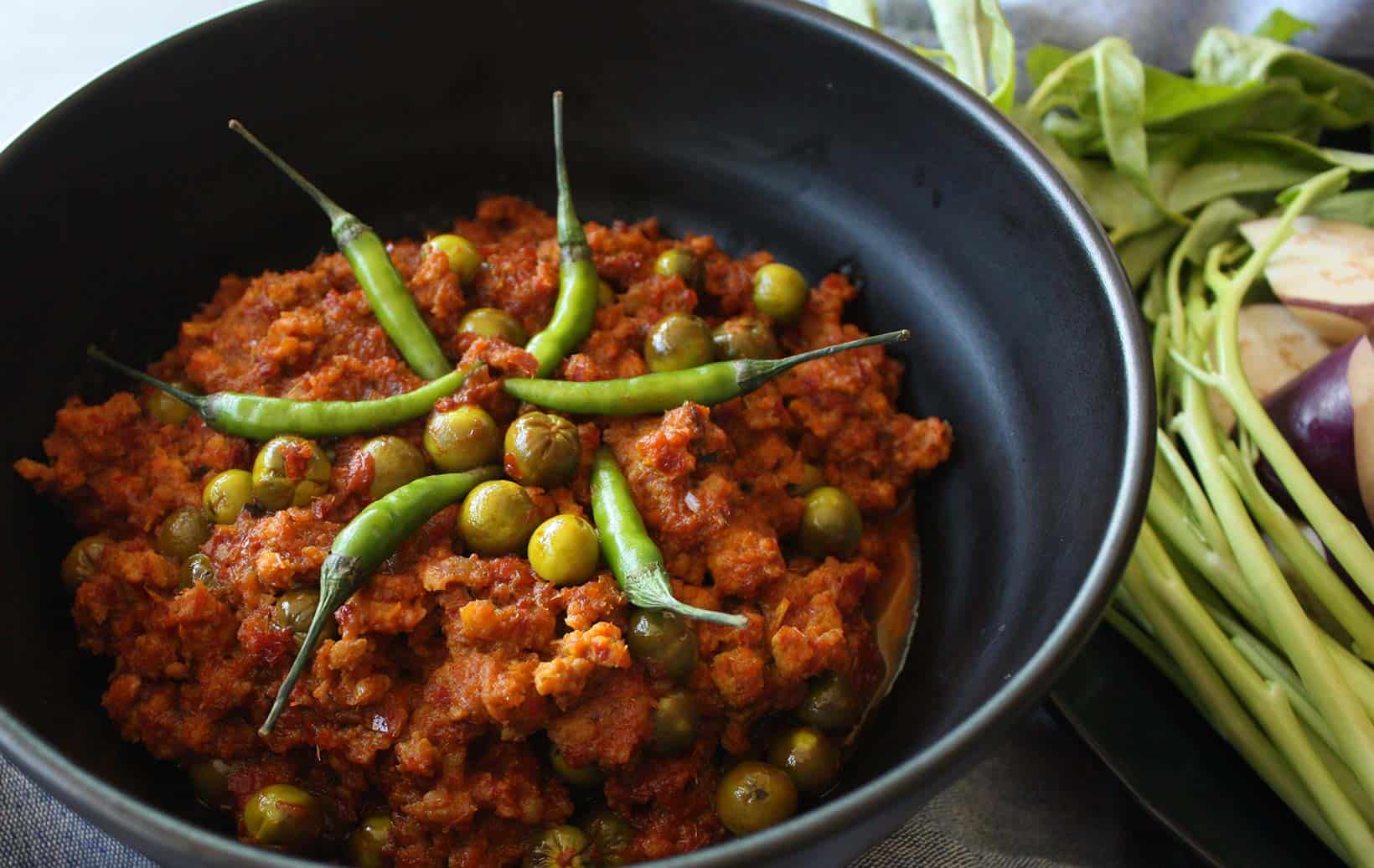
What is prahok?
Prahok is a Cambodian fermented fish paste you can serve a seasoning or a primary ingredient in a number of dishes, including prahok ktiss. In Khmer cuisine, you’ll find that prahok can be:
- Fried: In fried dishes, prahok is often mixed with minced meat. Our prahok ktiss recipe and fried prahok with pork belly (recipe coming soon!) are prime example of this preparation method.
- Steamed: Khmer cooks often mix raw prahok with egg, minced pork, or both, and steam the mixture, then serve it as a dip for veggies.
- Used as a seasoning: Prahok’s unique, sharp aroma sees plenty of use in seasoning popular Cambodian dishes. Recipes where cooks use prahok as seasoning include papaya salad, nom banh chok (Khmer noodles), and several Cambodian sauces.
Prahok has a history that spans hundreds of years, and during this time, different fermentation and preparation methods have emerged. However, the general process for making prahok is as follows:
- Fish gets descaled and gutted.
- The fish is then crushed.
- The crushed fish is placed in the sun for at least a day.
- Finally, the fish is salted and set aside in jars, where it ferments.
Cambodians make prahok with various freshwater fish. However, mud carp (known as “trei riel” in Cambodia”) finds itself in prahok barrels far more than other species. Because of mud carp’s widespread use in prahok (arguably Cambodia’s national ingredient), grateful Cambodians hold the little fish in high regard — even the country’s currency (riel) allegedly gets its name from this fish. That said, you’ll also find prahok that’s made with mudfish (great for prahok novices) and moonlight gourami.
Several countries in Southeast Asia have their prahok equivalents, all of which are slightly similar in nature but somewhat different from the Cambodian prahok. Vietnamese fermented fish varieties, such as mắm lóc xay, mắm bò hóc, and mắm ca loc are the most similar to Khmer prahok. Padaek and pla ra are the Lao and Thai fermented fish varieties, respectively.

